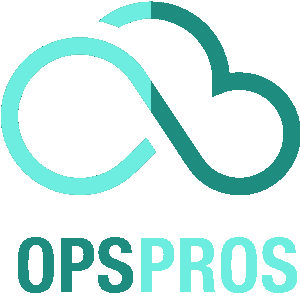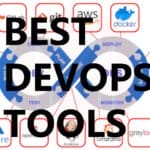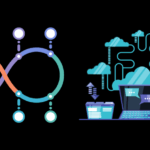
Why bother with 2024’s DevOps statistics? They’re your ticket to staying sharp and ahead in today’s fast-paced digital scene. By diving into the freshest trends and tools, companies can polish their software game. This means getting your product out faster and ensuring it hits the mark with users.
Let’s dive into DevOps as of 2024. It’s been on the rise since it first popped up, tackling big headaches like disconnected data, old-school methods, and team skills. Now, more companies are getting on board, aiming for better results.
Here’s a nugget for you: research by Markets and Markets forecasts the DevOps market hitting $25.5 billion by 2028. That’s a hefty 19.7% growth from 2024 to 2028. Pretty cool, right?
But hold up, what’s DevOps all about? Before we dig into the stats for 2024, let’s break down this buzzword.
Table summary of the Devops Statistics
| Statistic | Value |
|---|---|
| DevOps Market Forecast (2028) | $25.5 billion |
| Growth Rate (2024-2028) | 19.7% |
| Companies with Cloud-First Strategies by 2025 | 85% |
| DevOps Reduction in Support Issues | 60% |
| Increase in Time for Infrastructure Improvements | 33% |
| Firms Agreeing on Platform Engineering’s Importance | 94% |
| DevOps Market Size (2023) | $10.4 billion |
| Market Size by 2026 | Over $12 billion |
| Companies Recognizing DevOps’ Competitive Edge | 86% |
| Companies Using or Planning to Use DevOps | 77% |
| Container Management Revenue Forecast (2024) | $944 million |
| Enterprise Apps in Containers by 2024 | 15% |
| Developers Prioritizing Containerization | 46% |
| Container Market Forecast (2030) | $33.86 billion |
| Average Salary for DevOps Engineers (US) | $133,133 |
| Number of DevOps Professionals in the US | 6,881 |
| Percentage of Women DevOps Engineers | 13.8% |
| Average Age of DevOps Engineers | 39 years |
| Global DevOps Market Growth Rate (2024-2028) | 19.7% CAGR |
| On-Premises DevOps Segment Forecast (2032) | $45 billion |
| Percentage of Organizations Noticing Positive Shift | 99% |
| Increase in Quality Output | 61% |
| Freedom in Experimentation | 49% |
| CI Tools Market Forecast (2031) | $4,377.77 million |
| AWS DevOps Deployment Frequency (May 2011) | Every 11.6 seconds |
| Microsoft Azure DevOps Server Adoption (2023) | 10,695 companies |
| Azure DevOps Market Share | 8.81% |
| Azure Active Directory Users | 722.2 million |
| Microsoft Azure Revenue Growth (FY2023) | 31% |
| Mature DevSecOps Culture in Organizations | 34% |
| Annual Investments Uptick in DevSecOps (2024) | 35% |
| CIOs Advocating DevSecOps | 94% |
| Leaders Betting on AIOps for DevSecOps | 90% |
| Acknowledgement of Automation Impact | 96% |
| Engineers Reporting Speed Increase | 60% |
| Companies at Pinnacle of Security Practices | 22% |
| DevOps Users Applying It Across All Projects | 51% |
| DevOps Users Leveraging Microservices and Containers | 71% |
DevOps?
It’s a blend of “Development” and “Operations.” This approach bridges gaps between planning, creating, delivering, and managing apps by syncing up people, processes, and tech.
It’s all about teamwork. DevOps smashes barriers that used to keep development, IT ops, quality engineering, and security from working together smoothly. It champions open communication and cooperation across departments. Thinking about beefing up your team’s skills? A DevOps engineer might be just what you need.
Don’t mistake it for a specific tech, though. It’s more about the vibe and how things get done. Here’s what typically goes down in a DevOps world:
- We’re talking continuous integration and delivery (or deployment if you’re fancy)—CI/CD for short. It’s all about making tasks run like clockwork, automatically.
- Tools for teaming up, keeping track of configurations, sorting out issues, and checking on things in real time.
- Plus, mixing in containers, cloud services, and other DevOps goodies to stay on the cutting edge.
The DevOps scene in 2024 is buzzing, and guess what? It’s not slowing down. In fact, DevOps is shining brighter than ever, bringing some pretty cool developments to the table.
Here’s a fun fact from Gartner to kick things off: by 2025, over 85% of companies will prioritize cloud-first strategies. Pretty intriguing, huh?
Now, let’s dive into some eye-opening DevOps stats for 2024:

- DevOps is a game-changer for companies, slashing the time spent on support issues by a whopping 60%. This is a big win for anyone thinking of jumping on the DevOps bandwagon.
- With DevOps, companies find themselves with 33% more time to beef up their infrastructure. That’s more time for improvement, less for firefighting.
- Here’s a kicker: 94% of firms agree that platform engineering is key to unlocking DevOps‘ full potential, especially if you’re aiming to scale up in 2024.
These numbers tell a story: DevOps isn’t just changing the game; it’s redefining how businesses operate and succeed.
The DevOps world is booming, expected to balloon to a whopping $25.5 billion by 2028 from $10.4 billion in 2023. That’s a hefty leap, with forecasts pointing to a nearly 19% annual growth rate. By 2026 alone, we’re looking at a market size of over $12 billion, according to Global Newswire.
Businesses are feeling the pressure to get new software out the door faster than ever. A solid 86% recognize the critical edge DevOps gives them in this race, as per findings from Google. It’s all about speed in today’s digital marketplace, where being quick on your feet can mean outpacing the competition.
And it’s not just a few; 77% of companies are either already leveraging DevOps for software deployment or planning to dive in soon. The message is clear: DevOps isn’t just a trend—it’s a necessity for staying competitive.
Containers are all the rage in IT, thanks to their role in making things swift and seamless. Let’s dive into some eye-opening stats about DevOps and containerization.
First off, Gartner predicts a big leap in container management revenue, expecting it to balloon from $465.8 million in 2020 to $944 million by 2024. That’s not all. They also believe that by 2024, 15% of enterprise apps will run in containers, a significant jump from less than 5% in 2020. This growth is despite hurdles like technical debt and budget limits.
Developers are putting containers at the top of their to-do list, with 46% prioritizing containerization. Not far behind are concerns for quality and security at 43%, and 32% are focusing on beefing up their CI/CD processes.
The big picture? The container market is booming, expected to skyrocket from $2.76 billion in 2021 to an impressive $33.86 billion by 2030, growing at a CAGR of 32.12% from 2023 to 2030. Containers are clearly a big deal, shaping the future of software development.
The Demand for DevOps Wizards
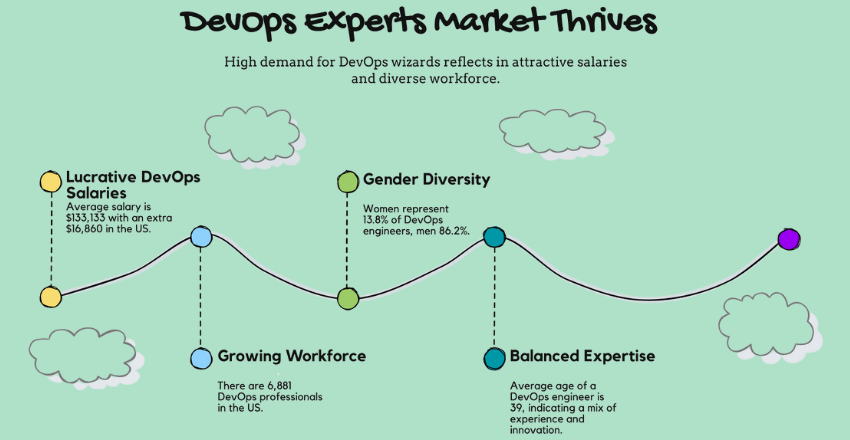
DevOps isn’t just a buzzword; it’s a career goldmine. Companies are in hot pursuit of DevOps experts, pushing the job market to new heights. Let’s decode what’s up with DevOps gigs.
Cash talks, and for DevOps engineers, it’s shouting. The going rate? A cool $133,133 average salary, plus a nice $16,860 in extra cash in the US.
How many are out there? Well, the US boasts 6,881 DevOps pros making things happen.
Diversity’s in the mix but could use a boost—13.8% of these engineers are women, against an 86.2% male majority.
And age? The average DevOps engineer clocks in at 39 years young. The field’s bustling, blending experience with fresh innovation.
DevOps: A Market on the Move in 2024
The DevOps arena is booming, with its value hitting over $10.4 billion in 2023. And guess what? It’s not slowing down. Predictions say it’ll surge at a 19.7% CAGR from 2024 to 2028, thanks to the push for quicker software development and faster delivery times.
Here’s a slice of the pie: the on-premises segment of DevOps is on track to a massive $45 billion by 2032. The reason? A growing concern for data privacy in the cloud.
Zooming out, the entire global DevOps market is set to balloon at that same 19.7% CAGR, aiming for a $25.5 billion valuation by 2028 from its $10.4 billion stance in 2023. It’s a field that’s clearly thriving, driven by the quest for efficiency and speed in tech.
DevOps Team Stats
Curious about what the DevOps buzz has really done for folks? Atlassian cracked it open with a survey, revealing some pretty telling stats.
Almost everyone agrees—99% of those surveyed noticed a positive shift in their organization thanks to DevOps. It’s more than just workflow magic; 78% had to pick up new skills, and nearly half credited DevOps for their pay bump. Ready for more insights?
Quality’s up, with 61% reporting better outputs. Experimentation’s not left behind either—49% felt more freedom to tweak and test their releases. The consensus? DevOps isn’t just changing the game; it’s setting a whole new standard.
DevOps: CI/CD in the Spotlight
Imagine a super-smooth assembly line for tech updates. That’s CI/CD for you—automating everything as soon as new code drops. Now, let’s zoom into some numbers that paint a picture of the CI/CD universe.
The CI tools scene? It’s booming. From a cool $970.52 million in 2022, we’re looking at a leap to $4,377.77 million by 2031. That’s an annual growth rate of 18.22% from 2023 to 2031.
But wait, there’s more. The quest for peak efficiency has pushed the CI tools market from $802.2 million in 2021 to an expected $3.76 billion by 2030. This tracks a growth pace of 18.74%. In the fast-evolving world of DevOps, CI/CD tools aren’t just handy; they’re essential for keeping businesses in the race.
Skyrocketing Speeds with AWS DevOps
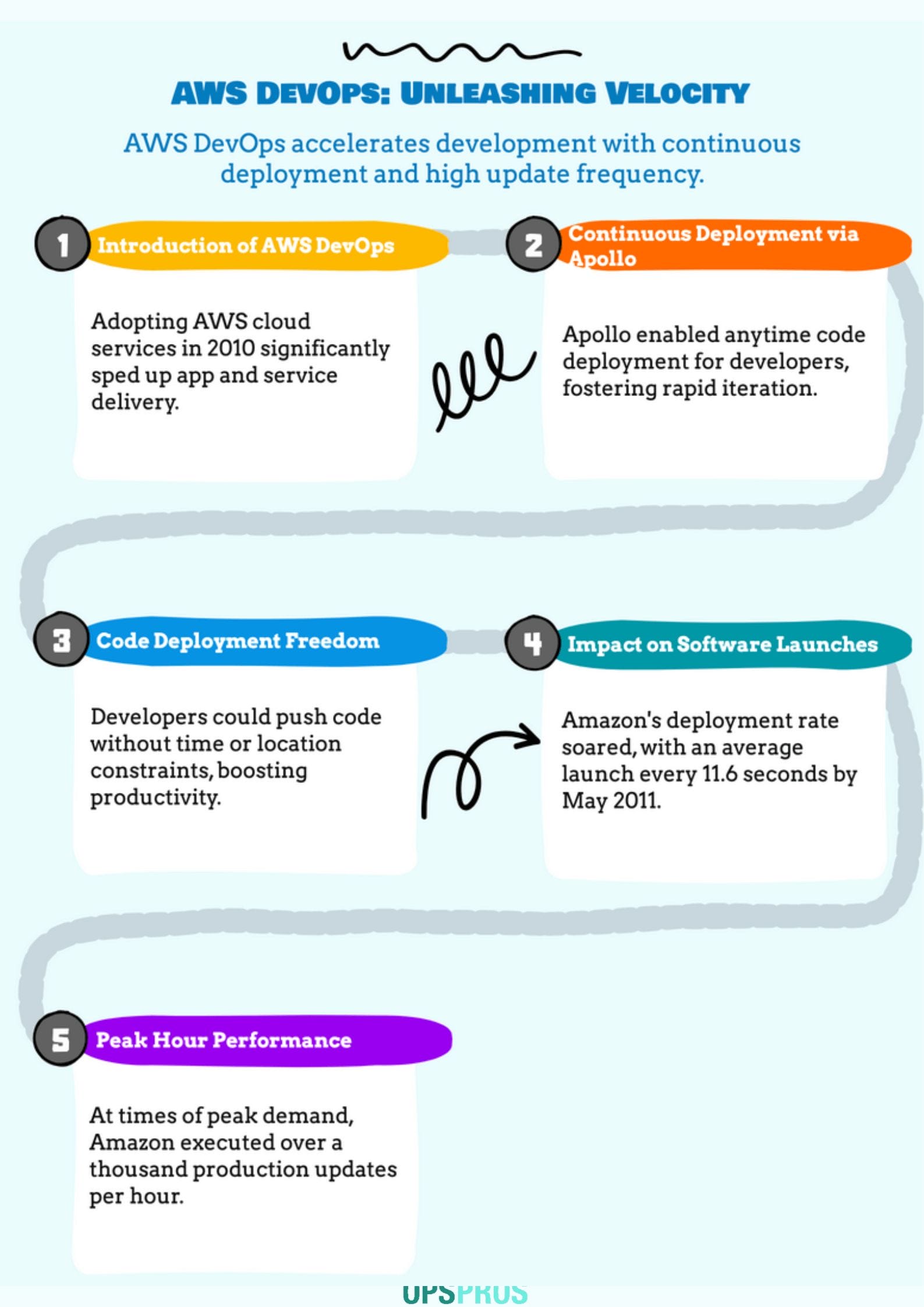
Diving into AWS DevOps, it’s clear it’s a game-changer. Back in 2010, shifting to AWS cloud made app and service delivery zip by faster than ever.
The secret sauce? A slick continuous deployment process powered by their Apollo system. Developers got the green light to push code anytime, anyplace. You’re probably curious about the impact of this freedom.
By May 2011, Amazon had turbocharged its software launches to production servers, hitting a jaw-dropping average of every 11.6 seconds. During peak productivity? Over a thousand updates zoomed to production every hour. Talk about efficiency.
Azure DevOps: A Global Force in 2024

In 2023, the adoption of Microsoft Azure DevOps Server hit a new high, with over 10,695 companies bringing it into their workflow for version control. A hefty slice of this pie—5,073 businesses, to be precise—hails from the U.S., accounting for 60.76% of its global user base. Let’s drill down into more Azure DevOps insights.
Azure DevOps isn’t just playing the game; it’s leading with a market share of 8.81%, throwing down the gauntlet to its three main rivals in the version control arena.
The platform is nearing a monumental milestone: almost 1 billion users. Azure Active Directory reports tally up to 722.2 million Azure aficionados.
As for financials? Microsoft Azure kicked off FY2023 with a bang, posting a revenue surge of 31%. Azure DevOps is not just growing; it’s thriving, carving out a significant niche in the digital landscape.
DevSecOps Stats
DevSecOps is all about weaving security into the fabric of development, right from the get-go. It’s about ensuring that security isn’t an afterthought but a fundamental part of the CI/CD pipelines. Let’s delve into the state of DevSecOps as we stand in 2024.
A solid 34% of organizations now boast a mature DevSecOps culture. This is promising news for any entity considering jumping on the DevSecOps bandwagon this year.
The commitment is ramping up, with predictions of a 35% uptick in annual investments toward DevSecOps automation in 2024. That’s a significant leap, signaling a strong belief in the value of integrating security seamlessly into development processes.
A whopping 94% of CIOs are convinced that spreading DevSecOps practices across more teams and projects is a critical lever for digital transformation. It paves the way for faster, safer software rollouts.
On the tech leadership front, 90% are betting on AIOps as a catalyst for expanding DevSecOps practices in 2024 and beyond. This integration promises to streamline operations further and enhance security protocols.
Reflecting on the impact, 96% of survey participants acknowledged the boon of automating security and compliance as a core aspect of DevOps. It’s clear evidence of the tangible benefits this approach brings to the table.
Lastly, a notable 60% of engineers report doubling their code release speed thanks to DevSecOps principles. This is a testament to the efficiency and security improvements that come with embracing DevSecOps.
Harnessing DevOps: Transforming Tech and Teams in 2024
Here’s a table summarizing the evolution of DevOps from its early days to its state in 2024
| Aspect | Then (Early Days of DevOps) | Now (2024) |
|---|---|---|
| Philosophy | Focus on breaking down silos between developers and operations. Aimed to improve collaboration and reduce bottlenecks. | Culture shift focusing on people and processes, deeply embedding DevOps within organizational workflows. |
| Automation | Automation in its infancy, with Continuous Integration (CI) just starting. Manual testing and deployment were prevalent. | Advanced automation with GitOps, blending Git with operations for seamless management. AI and ML (AIOps and MLOps) automate IT operations, streamlining monitoring, management, and analytics. |
| Security | Security often an afterthought, addressed late in the development cycle, leading to vulnerabilities and higher costs. | Security is a top priority with DevSecOps, embedding security early in the development process for proactive measures. 22% of companies at the pinnacle of security practices have matured in their DevOps journey, indicating a close connection between DevOps and enhanced security. |
| Tooling and Infrastructure | Tools were less sophisticated and less integrated. Cloud computing was emerging, with concerns around security and reliability. | Rich ecosystem of sophisticated tools and practices. Cloud-native tools and practices are vital, with serverless computing removing infrastructure management concerns. Container technology is evolving, making development and deployment faster across various sectors. |
| Application Development | Less focus on scalable, flexible application development. | Heavy emphasis on microservices, containers, and low-code/no-code solutions, indicating a move towards more flexible, scalable application development and deployment practices. About 71% of those who’ve adopted DevOps leverage microservices and containers. |
| Adoption | Niche concept with early adopters focused on automation and cloud potential. | Broad adoption across industries, with about 51% of DevOps users applying it across all projects. DevOps seen as a transformational approach, driving businesses towards agile, secure, and efficient futures. |
| Trends | Emergence of cloud computing and the initial push towards automation and integration. | Trends include GitOps, AIOps and MLOps, serverless computing, DevSecOps, microservices, enhanced containerization, and the surge of low-code applications. These trends shape the DevOps landscape, driving innovation and efficiency. |
Embracing DevOps isn’t just about new tools—it’s a shift in culture, focusing on people and processes. Let’s dive into the benefits DevOps has ushered in for organizations.
A Puppet report reveals that 22% of companies at the pinnacle of security practices have also matured in their DevOps journey. This connection underscores DevOps as a catalyst for both operational efficiency and enhanced security.
Forrester’s findings paint a broader picture of DevOps integration. About 51% of those using DevOps are applying it across the board, to both new and ongoing projects. Interestingly, a mere 13% confine their use of DevOps to proof-of-concept stages. This suggests a commitment to embedding DevOps deeply within organizational workflows.
Moreover, Forrester highlights a significant trend: 71% of those who’ve adopted DevOps are leveraging microservices and containers. This indicates a move towards more flexible, scalable application development and deployment practices. DevOps, in 2024, is clearly more than a trend—it’s a transformational approach, driving businesses towards more agile, secure, and efficient futures.
2024 DevOps Evolution: Key Trends to Watch

As we sail through the 21st century, it’s clear: every company is now a tech company at heart. The surge of cloud-native tools and practices has made the DevOps methodology more vital than ever. With DevOps continually evolving, staying updated with the trends for 2024 is crucial. Let’s jump into the future of DevOps.
- GitOps Takes the Stage GitOps, blending Git with operations like Kubernetes, is reshaping how we manage infrastructure and deploy apps. By 2024, expect GitOps to tighten its integration with CI/CD pipelines, offering seamless management of both application and infrastructure code.
- The Rise of AIOps and MLOps AIOps and MLOps are setting the stage for a revolution, leveraging AI and ML to automate IT operations. These technologies promise to streamline monitoring, management, and analytics, reducing manual effort and enhancing accuracy.
- Serverless Computing Grows Serverless is on an upward trajectory, removing infrastructure management worries and enabling rapid application improvement. By 2024, serverless computing will continue to allow developers to focus more on coding and less on server upkeep.
- DevSecOps: Security First In a world where digital security is paramount, DevSecOps emerges as a top trend. It emphasizes embedding security early in the development process, shifting from reactive to proactive security measures.
- Microservices Dominate Microservices architecture is now a benchmark in software development, offering unmatched agility, efficiency, and scalability. It allows for small, incremental updates, making deployments more reliable and secure.
- Containerization: Efficiency Unleashed Container technology, a staple in DevOps, is evolving. With new variants making development and deployment faster, containers are proving essential not just in tech but across various sectors like finance and retail.
- The Surge of Low-code Applications The appeal of low-code/no-code solutions is skyrocketing. These platforms empower organizations to accelerate their app development, leveraging the growing tech savviness of their teams.
In 2024, these seven trends will shape the DevOps landscape, driving innovation and efficiency across the board. Keeping an eye on these developments is key for any organization looking to thrive in the digital era.
The Origins and Evolution of DevOps

Once upon a time, DevOps was a niche concept. Early adopters focused on breaking down silos between developers and operations teams. Automation was in its infancy, with continuous integration (CI) just starting to take off. Security was often an afterthought, addressed late in the development cycle. Tools were less sophisticated, and the cloud was just beginning to emerge as a game-changer.
The Early Philosophy Back when DevOps first entered the scene, it was more of a revolutionary idea than a widespread practice. The pioneers of DevOps were driven by a desire to mend the rift between developers, who were focused on introducing new features, and operations teams, concerned with stability and uptime. This division often led to bottlenecks, delays, and finger-pointing when things went awry.
The Birth of Automation In these formative years, automation tools were just starting to make waves. Continuous Integration (CI) was a groundbreaking idea, proposing that code changes be automatically tested and merged into a shared repository. This was a big leap from the manual testing and deployment processes prevalent at the time, which were not only time-consuming but also prone to human error.
Security’s Backseat Role Regarding security, the mindset was decidedly reactive. Security checks and considerations were typically tacked on at the end of the development cycle, leading to last-minute scrambles and potentially leaving vulnerabilities unaddressed until it was too late. This approach often resulted in higher costs and longer timelines to resolve security issues that could have been identified earlier.
Tooling and Infrastructure in Infancy The tooling landscape for DevOps was relatively barren compared to today’s rich ecosystem. The tools available were less integrated and more cumbersome to use, requiring significant manual effort to achieve what now might take a few clicks in a more sophisticated platform. Similarly, the concept of cloud computing was just beginning to take hold. The cloud’s potential to provide scalable, on-demand resources was recognized but not yet fully realized or trusted by many organizations. The idea of moving operations from physical servers housed within an organization’s own data center to a virtual environment managed by a third party was both exciting and daunting.
The Cloud Emerges As cloud computing started to gain traction, it presented a paradigm shift in how resources could be managed and scaled. The early cloud adopters began to see the benefits of this flexibility, although widespread adoption was still on the horizon. The cloud’s promise to streamline operations and reduce hardware costs was enticing, but concerns around security, data sovereignty, and reliability were significant hurdles.
Reflecting on the Journey This glimpse into DevOps’ early days highlights a time of exploration, learning, and gradual acceptance. The challenges faced by early adopters paved the way for the advancements we see today.
As DevOps matured, it evolved from a niche concept into a foundational element of modern software development, shaped by the lessons learned during its formative years. The initial struggles with automation, security, tooling, and cloud integration laid the groundwork for the sophisticated, integrated DevOps practices that now drive efficiency and innovation in organizations worldwide.
Sources
https://www.gminsights.com/industry-analysis/devops-market
https://www.gartner.com/en/newsroom/press-releases/2021-11-10-gartner-says-cloud-will-be-the-centerpiece-of-new-digital-experiences
https://www.alliedmarketresearch.com/devops-market
https://www.globenewswire.com/en/news-release/2021/09/28/2304443/28124/en/Insights-on-the-DevOps-Global-Market-to-2026-Featuring-Broadcom-Docker-and-SaltStack-Among-Others.html
https://www.statista.com/topics/9369/devops/https://www.redhat.com/en/containers-kubernetes-dynamic-market-report/emea/2021
https://services.google.com/fh/files/misc/2022_state_of_devops_report.pdfhttps://straitsresearch.com/report/continuous-integration-tools-market
https://www.statista.com/statistics/1242206/microsoft-azure-revenue-yoy-quarterly/#:~:text=Microsoft%20Azure%20revenue,-Microsoft%20does%20not&text=In%202021%2C%20the%20intelligent%20cloud,over%2060%20billion%20U.S.%20dollars
https://puppet.com/resources/report/2021-state-of-devops-report
https://www.zippia.com/devops-engineer-jobs/demographics/
https://builtin.com/salaries/dev-engineer/devops-engineer
https://www.statista.com/statistics/1292382/popular-technologies-in-the-devops-tech-stack/
https://cloud.google.com/devops/state-of-devopshttps://www.marketsandmarkets.com/Market-Reports/devops-824.html
https://www.forrester.com/report/Five-Key-Trends-To-Benchmark-DevOps-Progress/RES120481
https://puppet.com/resources/report/2021-state-of-devops-report
https://www.statista.com/statistics/1233917/software-development-methodologies-practiced
Noah is an accomplished technical author specializing in Operations and DevOps, driven by a passion ignited during his tenure at eBay in 2000. With over two decades of experience, Noah shares his transformative knowledge and insights with the community.
Residing in a charming London townhouse, he finds inspiration in the vibrant energy of the city. From his cozy writing den, overlooking bustling streets, Noah immerses himself in the evolving landscape of software development, operations, and technology. Noah’s impressive professional journey includes key roles at IBM and Microsoft, enriching his understanding of software development and operations.
Driven by insatiable curiosity, Noah stays at the forefront of technological advancements, exploring emerging trends in Operations and DevOps. Through engaging publications, he empowers professionals to navigate the complexities of development operations with confidence.
With experience, passion, and a commitment to excellence, Noah is a trusted voice in the Operations and DevOps community. Dedicated to unlocking the potential of this dynamic field, he inspires others to embrace its transformative power.
